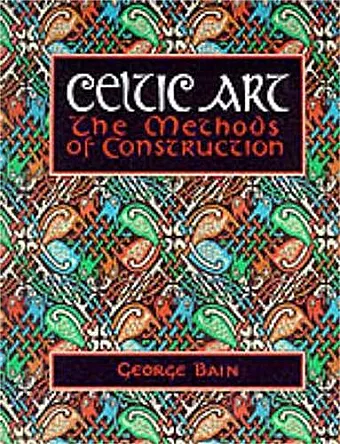Celtic Art
The Methods of Construction
Format:Paperback
Publisher:Little, Brown Book Group
Published:23rd Sep '96
Should be back in stock very soon

The Pictish School of Celtic art from pagan symbols to monumental sculptures, thoroughly covered and illustrated.
Celtic Art is the only indigenous British art form of world significance and this book is a graphically eloquent plea for the establishment of this great national art to its rightful place in schools and colleges where the history of ornament is being taught.
Until recently, the classical orientated art-world has regarded the abstract, iconographic and symbolic style of the Celtic artist as something of an enigma, a mysterious archaic survival largely ignored in histories of art. The modern trends away from realism and the interest of the younger generation in psychedelic and art nouveau styles provides favourable ground for the Celtic art revival which the widespread interest in this new edition seems to indicate is possible.
When this book first appeared, it was hailed as a 'veritable grammar of ornament'. It is certainly an indispensable reference book and practical textbook for the art student and craftsman seeking simple constructional methods for laying out complex ornamental schemes.
The entire chronology of symbols is embrace from spirals through chevrons, step patterns and keys to knotwork interlacings, which are unique to this particular Celtic school. There are also sections dealing with zoomorphics, authentic Celtic knitwear, ceramics and other areas in which the author pioneered in his day.
This book deals with the Pictish School of artist-craftsman, who cut pagan symbols like the Burghead Bull, and in the early Christian era designed such superb examples of monumental sculpture as the Aberlemno Cross, the Ardagh Chalice and the counter-parts in the Books of Kells and Lindisfarne.
Knotwork Interlacings, owing much of their perfection and beauty to the use of mathematical formulae, are unique to Pictish Art and are found nowhere else than the areas occupied by the Picts. The outstanding achievement of their art was the subtle manner in which they combined artistic, geometric and mathematical methods with magic, imagination and logic, the function being both to teach and adorn.
Although incidental to the main educational purpose of this book, there is also an implicit challenge to the art historian and archaeologist. The author frankly admits that the evidence such researches into the art have revealed of a hitherto unsuspected culture of much sophistication in pre-Roman Britain, pose as many questions as are...
ISBN: 9780094769007
Dimensions: 282mm x 224mm x 12mm
Weight: 460g
164 pages